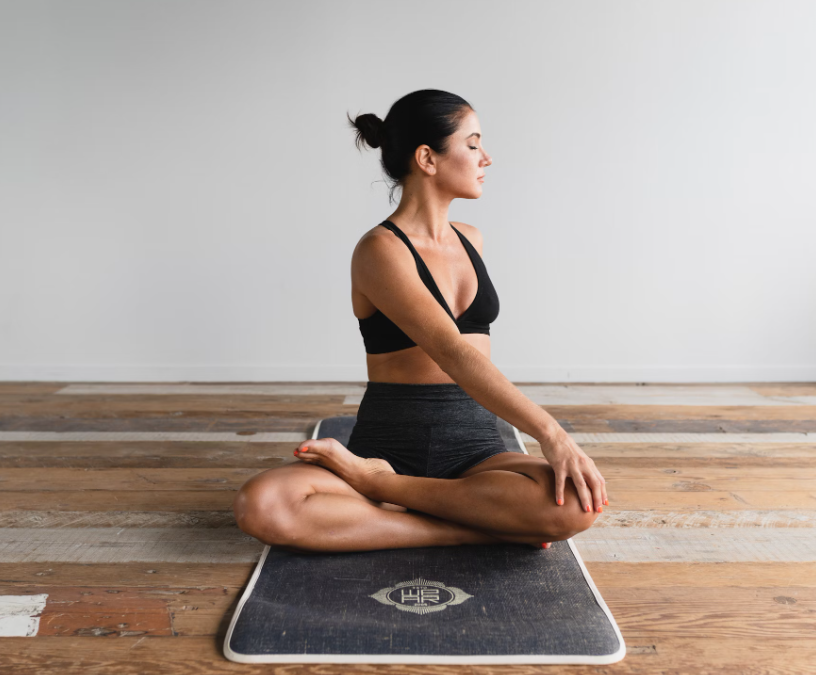Vertigo is a type of dizziness characterized by a sensation of imbalance, caused by disruptions in the brain’s equilibrium and coordination. It often affects the inner ear—the area responsible for tracking body movement and orientation—and can result from fluid buildup or even a viral infection in the brain. However, some yoga poses have been proven to enhance balance and stimulate the nervous system, offering long-term relief from vertigo.
It’s no secret that many health issues stem from stress, and yoga along with breathing techniques can support a calm and healthy life. Learn more in the Breathing Techniques and Meditation Course and discover balance and harmony in your daily life.
Causes and Symptoms
Vertigo commonly occurs when the inner ear doesn’t receive sufficient blood flow. Viruses that cause colds or the flu may also attack the inner ear and its neural connections to the brain, triggering severe dizziness. Head trauma can lead to disorienting vertigo, often accompanied by nausea or even hearing loss. Certain foods or airborne particles (such as dust, mold, or pollen) may also provoke symptoms.
Neurological disorders like multiple sclerosis, syphilis, and tumors can impair balance and lead to recurring dizzy spells.
At our regularly held Secrets of Breathing seminars, you’ll learn how to integrate yoga into your life for safe and natural self-care—without the need for medication.
Yoga for Vertigo Relief
The ancient Indian science of yoga offers postures that activate the nervous system and balance centers of the inner ear, while also developing focus and concentration.
These gentle yet powerful exercises directly affect the sympathetic nervous system and help improve circulation to the head and other parts of the body. You can learn a complete set of yoga postures during a course with The Art of Living.
The following yoga techniques can significantly help reduce vertigo symptoms when practiced regularly, supporting both mind and body balance:
Shanmukhi Mudra
This practice calms the brain and the nervous system. It may help reduce anxiety, irritability, and anger.
Nadi Shodhana Pranayama
This alternate nostril breathing technique purifies the blood and respiratory system. Deep inhalation increases oxygen levels in the blood and strengthens respiratory function while balancing the nervous system.
Salamba Sirsasana (Supported Headstand)
This inversion helps with issues related to the liver, kidneys, stomach, intestines, and reproductive organs. It also stimulates the pituitary and pineal glands, which support growth and hormonal balance.
Halasana (Plow Pose)
Halasana strengthens and opens the neck, shoulders, and back muscles. It soothes the nervous system, reduces stress, stimulates the thyroid gland, and is particularly helpful for women during menopause.
Paschimottanasana (Seated Forward Bend)
This pose relieves stress and helps alleviate anxiety, anger, and irritability. It also balances menstrual disorders and is highly recommended for women postpartum.
Shavasana (Corpse Pose)
Last but not least, Shavasana induces a deep meditative state of rest that aids tissue and cell regeneration while releasing stress. It also lowers blood pressure, eases anxiety, and combats insomnia.
Poses to Avoid
In general, people suffering from vertigo should avoid sudden movements and postures that involve lowering the head below the heart. Yoga should be practiced slowly and mindfully to prevent any worsening of symptoms.
It’s essential to note that a clean, healthy blood flow to brain cells is at the heart of vertigo recovery. Yoga poses that stimulate the nervous system and purify the blood flow to the brain are especially therapeutic.
Ayurvedic Wisdom
As an inseparable companion to yoga, the ancient science of Ayurveda can also be of great support. You can consult a trained Ayurvedic specialist for a personal diagnosis to identify lifestyle factors that negatively impact your health and intensify vertigo symptoms.
This holistic perspective can offer tailored dietary and lifestyle adjustments that help restore balance, reduce dizziness, and strengthen your overall well-being.






